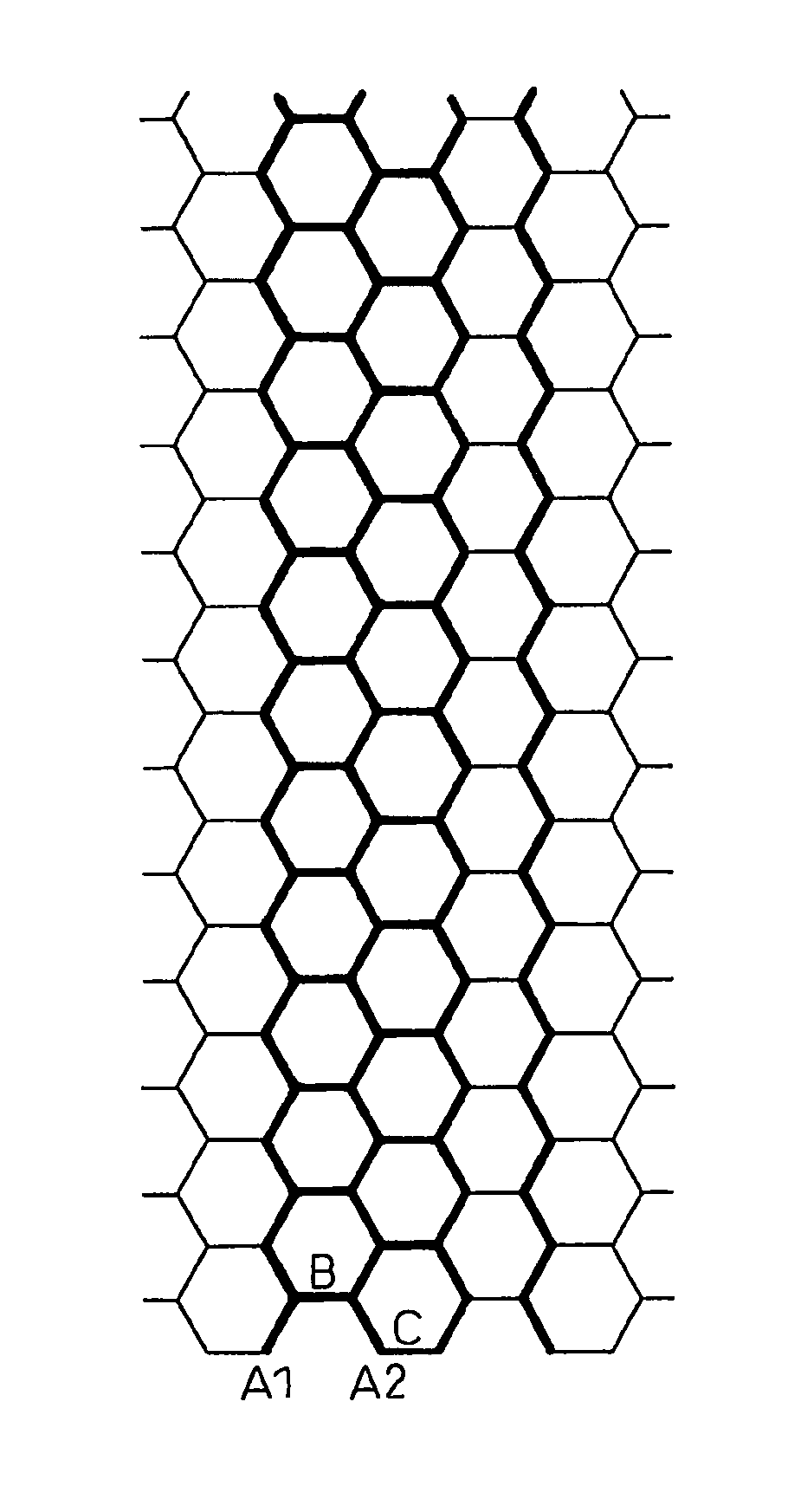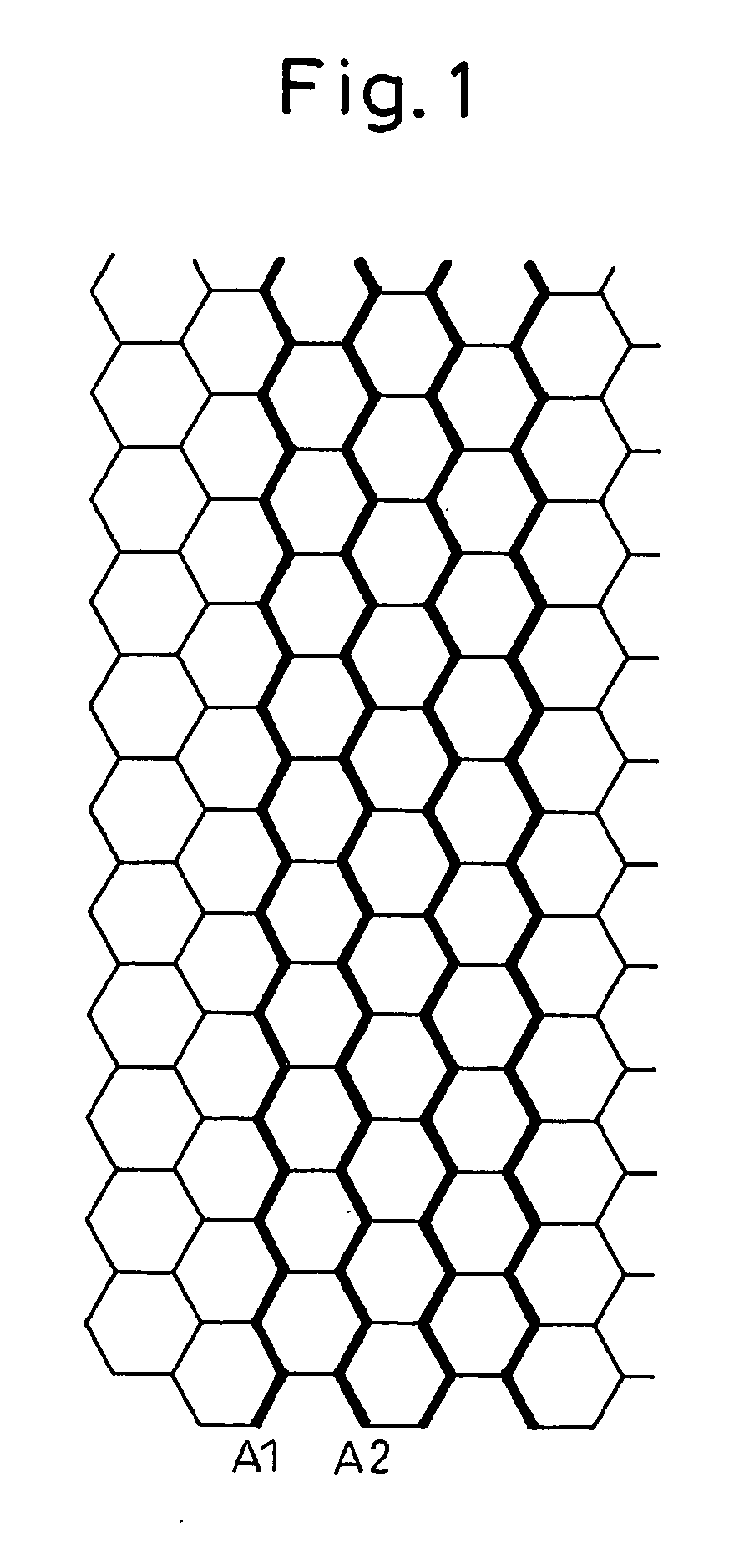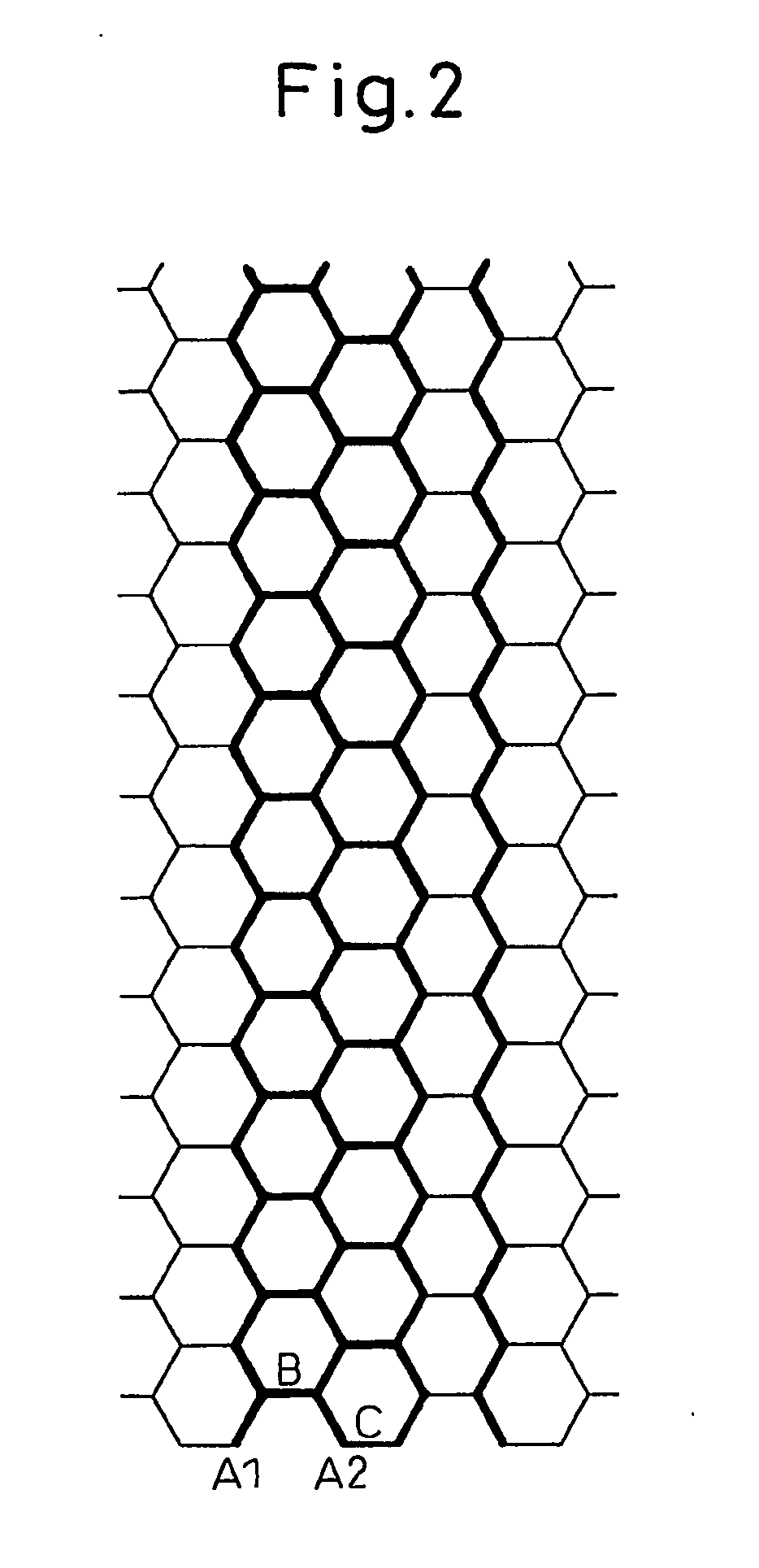Production method for semiconductor device
a production method and semiconductor technology, applied in the direction of semiconductor devices, basic electric elements, electrical appliances, etc., can solve the problems of difficult to accurately form a marking-off line in the form of a polygonal line or a curve, loss of triangular areas, and inability to effect polygonal machining or curved machining. , to achieve the effect of excellent light extraction efficiency, low cost and good area efficiency
- Summary
- Abstract
- Description
- Claims
- Application Information
AI Technical Summary
Benefits of technology
Problems solved by technology
Method used
Image
Examples
example 1
[0082] A blue light-emitting device comprising a Group III nitride semiconductor having an orthohexagonal chip form was fabricated in a manner as described below. FIG. 5 is a plan view of a light-emitting device fabricated in this example, wherein reference numeral 1 denotes a p-electrode, 2 a p-electrode bonding pad, 3 denotes an n-type exposed surface and reference numeral 4 denotes an n-electrode.
[0083] A Group III nitride semiconductor stacked layer structure was formed by successively stacking, on a sapphire substrate having a diameter of 5.1 cm (2 inches) and a thickness of 420 μm and via a buffer layer of AlN, an underlying layer of undoped GaN having a thickness of about 4 μm, an n-side contact layer of Ge-doped (concentration of 1×1019 / cm3) GaN having a thickness of about 2 μm, an n-side clad layer of Si-doped (concentration of about 1×1018 / cm3) Ino.1Gao.9N having a thickness of about 12.5 nm, a light-emitting layer of a multiple quantum well structure, in which a barrier ...
example 2
[0090] A blue light-emitting device comprising a Group III nitride semiconductor was fabricated in a manner as described below. The form thereof on a plane was the same as that of Example 1.
[0091] A Group III nitride semiconductor stacked layer structure was formed by successively stacking, on a sapphire substrate having a diameter of 5.1 cm (2 inches) via a buffer layer of AlN, an underlying layer of undoped GaN having a thickness of about 4 μm, an n-side contact layer of Ge-doped (concentration of 1×1019 / cm3) GaN having a thickness of about 2 μm, an n-side clad layer of Ge-doped (concentration of about 1×1018 / cm3) Ino.1Gao.9N having a thickness of about 12.5 nm, a light-emitting layer of a multiple quantum well structure, in which a barrier layer of GaN having a thickness of about 16 nm and a well layer of In0-2Ga0-8N having a thickness of about 2.5 nm were stacked five times alternately and finally the barrier layer was further stacked, a p-side clad layer of Mg-doped (concentra...
example 3
[0098] In Example 1, the laser beam was irradiated in a manner as described below. Referring to FIG. 4, separation grooves of the same length as the length of a side of a hexagonal chip form were discretely formed like a broken line in a first direction to form separation grooves (E) of the form of a broken line in the first direction. Next, the stage was turned by 60 degrees. Separation grooves of the same length as the length of the side of the hexagonal chip form were formed like a broken line starting from the ends of the separation grooves (E) of the form of a broken line in the first direction, thereby to form separation grooves (F) of the form of a broken line in a second direction. Next, the stage was turned by another 60 degrees. Separation grooves of the same length as the length of the side of the hexagonal chip form were formed like a broken line starting from the ends of the separation grooves (F) of the form of a broken line in the second direction, thereby to form sep...
PUM
| Property | Measurement | Unit |
|---|---|---|
| angle | aaaaa | aaaaa |
| thickness | aaaaa | aaaaa |
| thickness | aaaaa | aaaaa |
Abstract
Description
Claims
Application Information
 Login to View More
Login to View More - R&D
- Intellectual Property
- Life Sciences
- Materials
- Tech Scout
- Unparalleled Data Quality
- Higher Quality Content
- 60% Fewer Hallucinations
Browse by: Latest US Patents, China's latest patents, Technical Efficacy Thesaurus, Application Domain, Technology Topic, Popular Technical Reports.
© 2025 PatSnap. All rights reserved.Legal|Privacy policy|Modern Slavery Act Transparency Statement|Sitemap|About US| Contact US: help@patsnap.com



